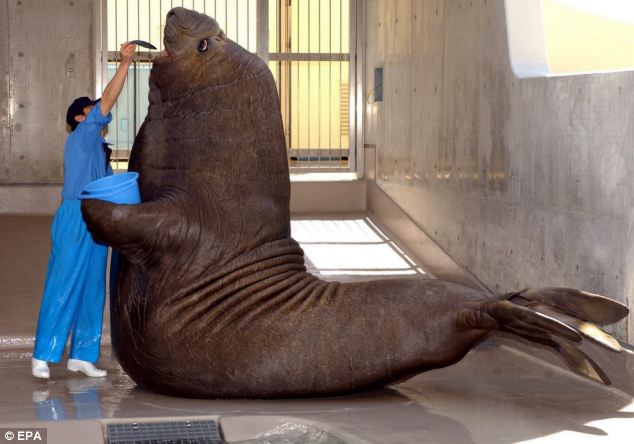The Paper: Portugal, A. B., Carvalho, F. L., de Macedo Carneiro, P. B., Rossi, S., & de Oliveira Soares, M. 2016. Increased anthropogenic pressure decreases species richness in tropical intertidal reefs. Marine Environmental Research. v120. 44-54
Biological Diversity

Biological diversity relates to the number of different species in a given area, and how equally those species are represented by the number of organisms in each group. Just like cultural and genetic diversity, biological diversity is an important indicator of the health of a community. When environmental conditions degrade, opportunistic species can outcompete and dominate the more vulnerable ones, leaving an environment with a disproportionately high number of one species. The reason biological diversity is important is all about balance. Just as we inhale oxygen and exhale carbon dioxide, with trees performing the opposite, most chemical compounds have a repeatable cycle that may require multiple organisms to complete. One animal’s waste product is another one’s dinner (Fig. 1).
Balancing Act
This balance of chemicals, and the species needed to keep it that way, can be undone by the introduction of high concentrations of one of these compounds. If one organism suddenly gets an overabundance of a chemical it needs to survive (nutrients from fertilizer runoff), but does not have to rely on another organism to make it for them, they can rapidly multiply and outcompete other species for the other, shared resources. Therefore, it is possible to study the diversity of species in a certain environment and infer something about the balance of chemical compounds.
The Science
In this case, a team of researchers from Brazil and Spain, led by Dr. Adriana Brizon Portugal, studied the biological diversity of near shore, sandstone reefs to see how humans are impacting these habitats. When structures and towns are built near the coast, there are several ways this can affect the adjacent marine ecosystem. As described above, runoff from agriculture and waste can introduce chemicals that are essential to the growth of some of the species in the community. This enables those particular organisms to thrive and outperform others so they become dominant and in some cases, completely eliminate the less competitive species. In other instances, runoff can introduce chemicals that are simply toxic to life and will kill the organisms that are more sensitive to them. Additionally, physical structures, like jetties, can alter the environment and make it difficult for some organisms to live.

Dr. Portugal and her team studied five sandstone reefs along the coast of Ceará, Brazil (Fig. 2), each with varying degrees of human population and development. Sampling of the biology was conducted in two ways. For the bottom dwelling, larger animals, a non-destructive photo-quadrat method was used. This basically means the bottom was divided using a grid, photographed, and the number of distinct species were counted in each of the sections. For algae (floating, microscopic organisms), samples were taken and an optical microscope was used to count and identify the species. The sample areas were also broken up into three zones based on location in the tidal area, with the low zone further into the water and the high zone near shore.
Environmental Pressure

To quantify human impacts, the team calculated the Relative Environmental Pressure Index (REPI). The REPI includes the percentage of urban areas, number of beach kiosks and restaurants, jetties, fish markets, storm sewers, ports, and fishing sheds. Once these factors are calculated, a number can be assigned to each of the sample locations where a small number is relatively minimal human impact, and a large number is high impact. For this study, the REPI varied between 1.37 and 38.36. Without getting into the particulars of each site, the important thing to note is that the site with the highest human impact is about 30x as severe as the site with the lowest impact with the other 3 sites spread out somewhat evenly. This means that the researchers can analyze their data over a broad range of impact values.
Implications
The researchers found that there was a strong negative correlation between REPI and biological diversity. From highest to lowest REPI (most to least human impact) are Meireles, Dois Coqueiros, Pacheco, Taíba, and Paracuru beaches. The sites with the most human influence (highest REPI) had the lowest species richness (total number of distinct species) and vice versa (Fig. 3).

Although this result is not unexpected, it certainly makes us think about how we look at human impacts on the environment. On the surface, none of these habitats are obviously having problems. They are all teeming with life and there are no visible pollutants to be seen. It is only with close examination and meticulous analysis that we can see how humans are impacting the environment. Biological diversity, as well as other early indicators, can be used to tackle the environmental factors that contribute to the REPI before an environment is damaged beyond repair.
I am completing my doctorate at the Graduate School of Oceanography at the University of Rhode Island where I study the community structure and evolution of deep-sea sediment bacteria. I have also been an adjunct professor at the Community College of Rhode Island for two years. I earned a B.S. in Aerospace Engineering from the University of Miami and spent 12 years in the US Navy driving submarines before coming back to grad school.


